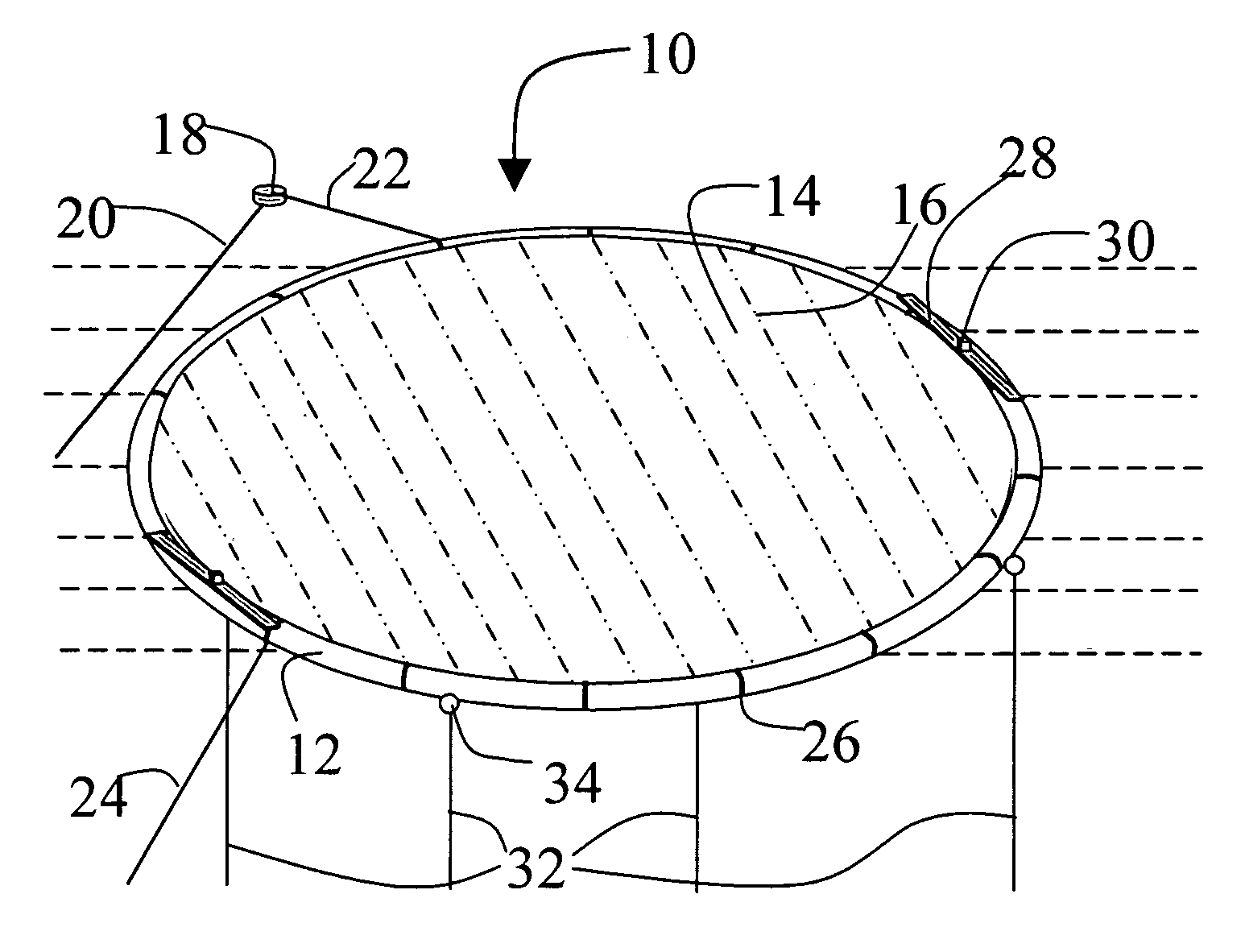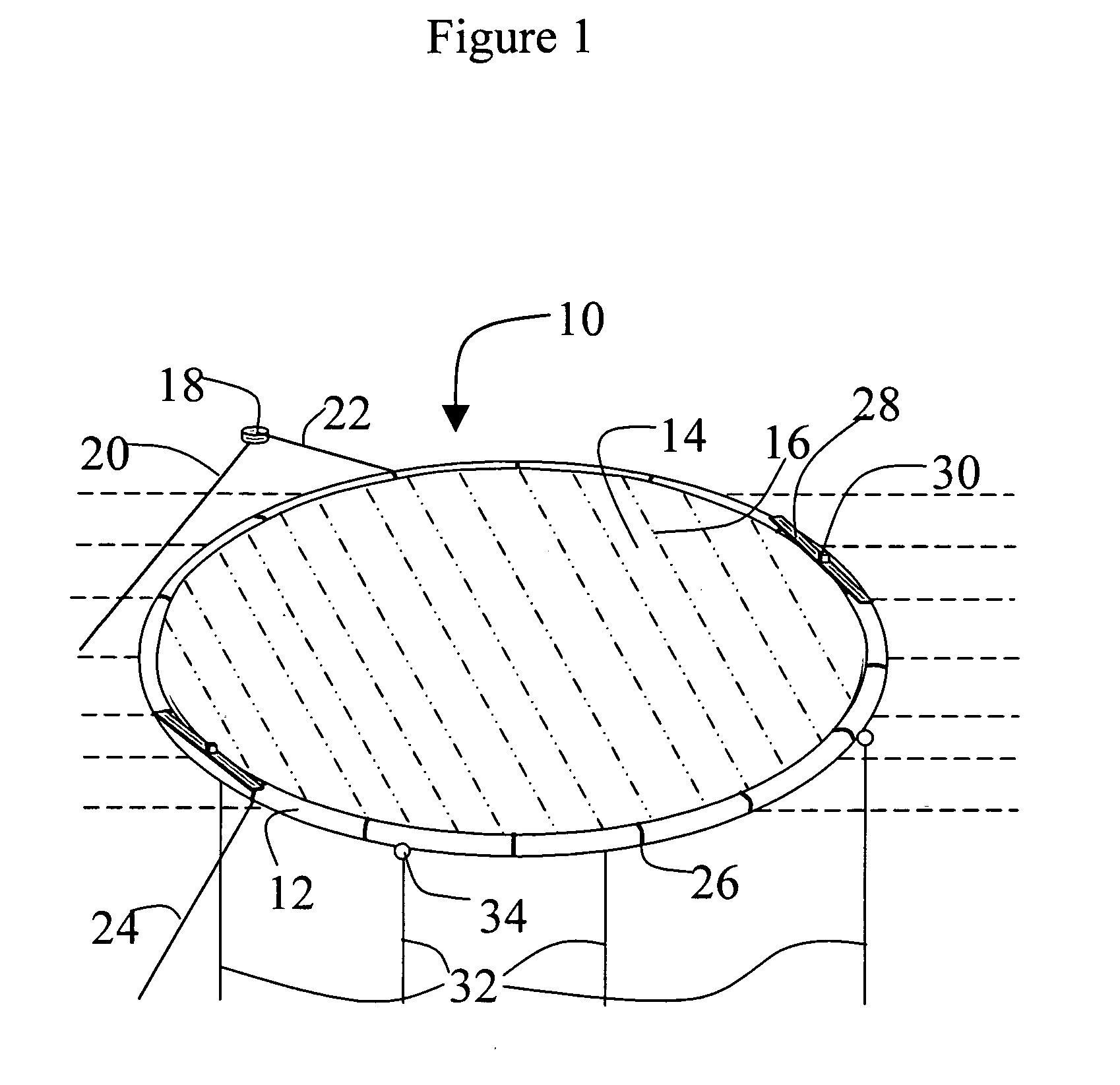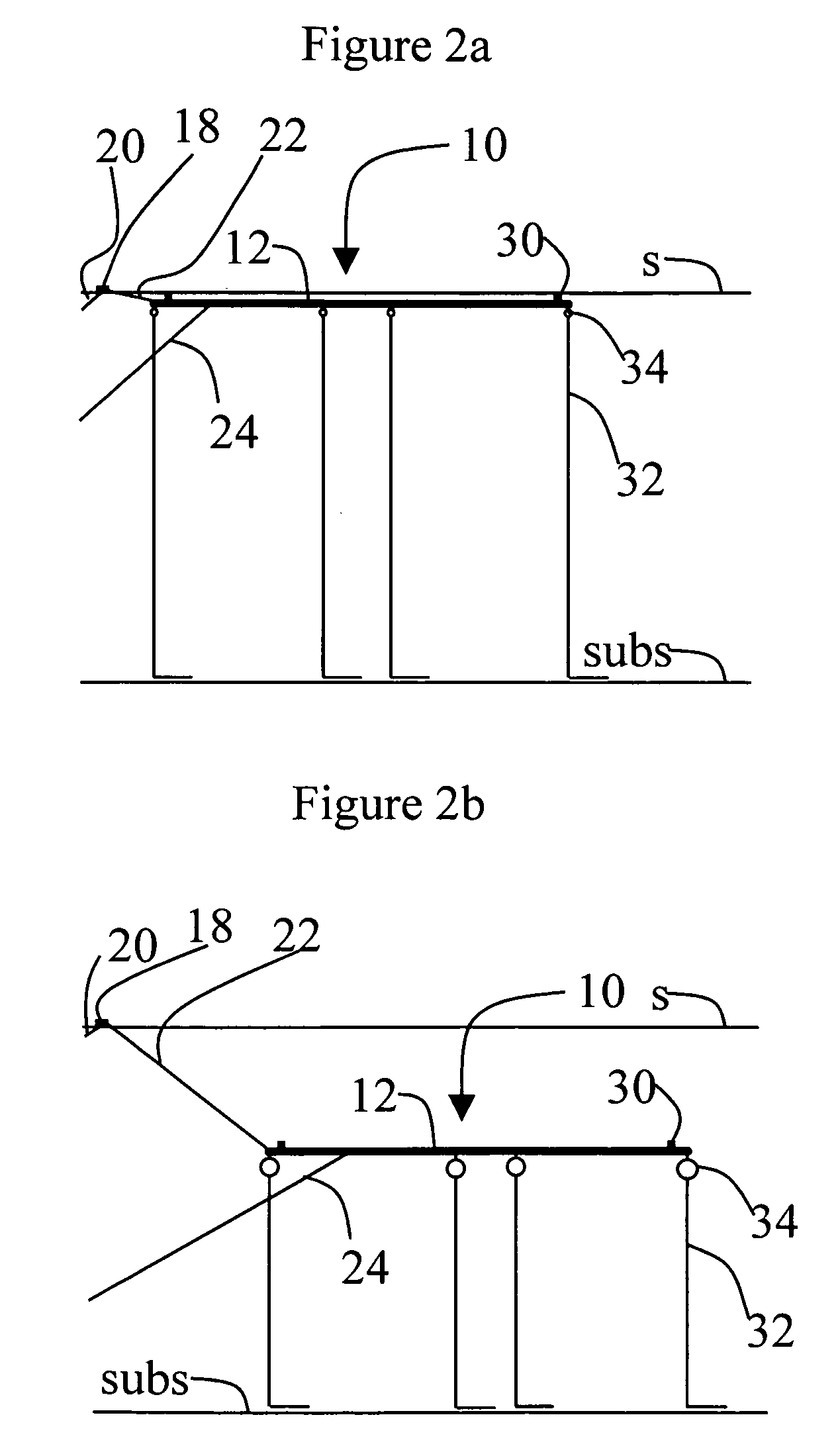Submersible aquatic algae cultivation system
a technology of cultivation system and aquatic algae, which is applied in the field of floating pond and cultivation system, can solve the problems of increasing the demand for energy, food and water, exacerbate environmental consequences, and add to the stretching of supplies, so as to achieve rapid growth and harvesting, and maintain the cost of operation, the effect of reducing the cost of harvesting
- Summary
- Abstract
- Description
- Claims
- Application Information
AI Technical Summary
Benefits of technology
Problems solved by technology
Method used
Image
Examples
example 1
[0093]The rectangular floating pond in FIG. 8 is useful for testing system components and culture maintenance procedures. It has relatively small surface area coverage and is not submersible. A convenient pond size is 10 meters wide by 100 meters long. The size is chosen so that the ratio of the width of the pond compared to the diameter of the longitudinal member is large enough for a representative current to establish itself. If this ratio is O(1), then the longitudinal members provide too much shelter against the wind and the current will be negligible. Also, the ratio of wave heights to the diameter of the longitudinal member cannot be significantly more than 1, or the waves will swamp the pond. As such, the pond of this example is designed for surrounding waves with limited significant wave heights.
[0094]The buoyant framework can be made from many different materials like UV resistant PE, HD, MD, or LD, UV resistant PVC, or other such material. The list included here is for il...
example 2
[0098]The floating pond depicted in FIG. 8 can be converted to a submersible pond with some additional system components already described. Additional valving, piping, and optionally air pumping capabilities, so that the culture and surrounding water can be pumped into and out of longitudinal member 132, enable adjustment of the pond's buoyancy. If materials of construction for the framework result in an average density of the pond greater than the surrounding water with longitudinal member 132 filled, then longitudinal tubes filled with air, like tubes 44 in FIG. 4b, will have to be added. Addition of submerging lines and spools then enable adjusting the orientation of the pond and its equilibrium submersion depth.
PUM
 Login to View More
Login to View More Abstract
Description
Claims
Application Information
 Login to View More
Login to View More - R&D
- Intellectual Property
- Life Sciences
- Materials
- Tech Scout
- Unparalleled Data Quality
- Higher Quality Content
- 60% Fewer Hallucinations
Browse by: Latest US Patents, China's latest patents, Technical Efficacy Thesaurus, Application Domain, Technology Topic, Popular Technical Reports.
© 2025 PatSnap. All rights reserved.Legal|Privacy policy|Modern Slavery Act Transparency Statement|Sitemap|About US| Contact US: help@patsnap.com



